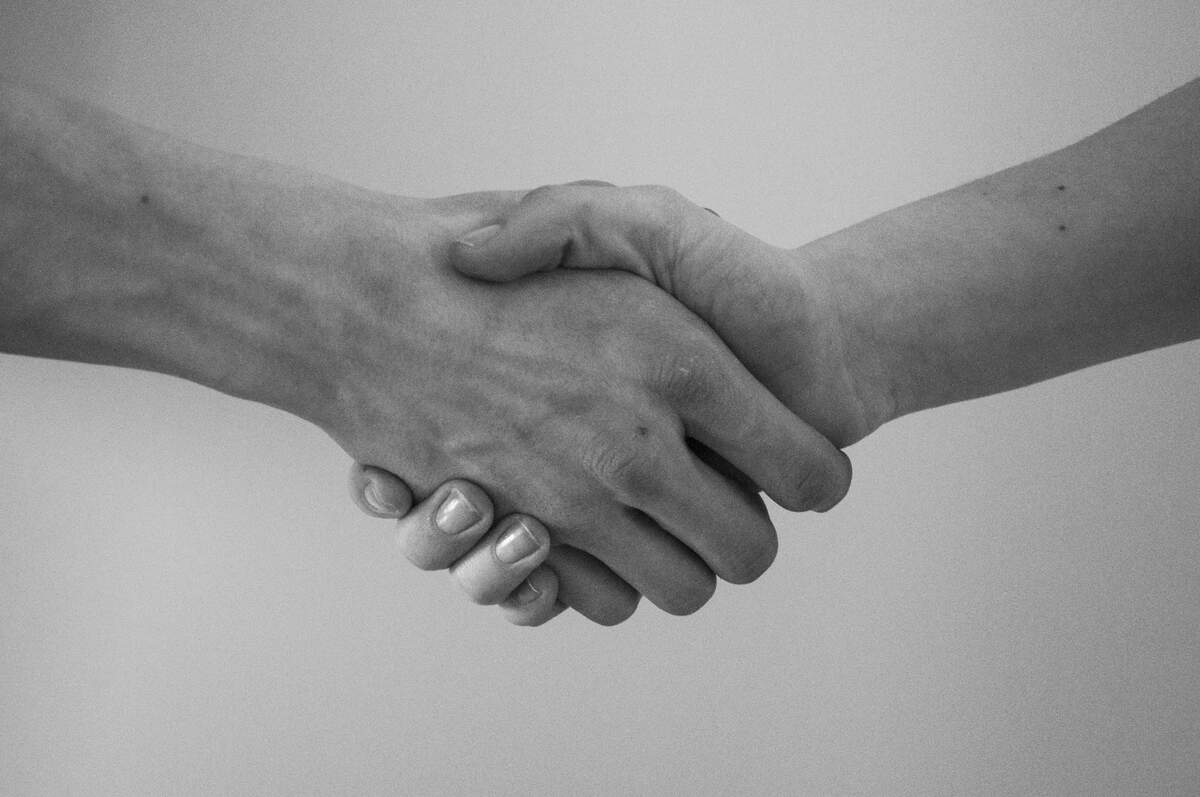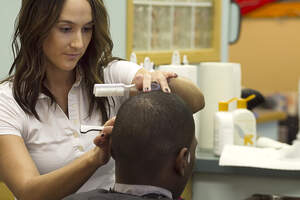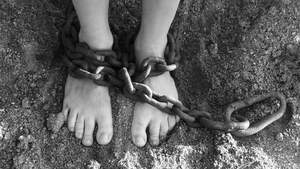

National Handshake Day
Observed
annually on June 28th (2005 and 2006)
the last Thursday in June (since 2007)
Dates
Founded by
Miryam S. Roddy in 2004
Tags
Work & Career
Hashtags
Sources
http://www.ouramericannetwork.org/story?title=Miryam-Roddy-on-National-Handshake-Day
https://news.hamlethub.com/plymouth/life/692-celebrate-national-handshake-day
https://www.cbsnews.com/news/is-the-handshake-dead/
https://www.history.com/news/what-is-the-origin-of-the-handshake
https://www.nationalgeographic.com/history/article/why-touch-others-history-handshake-offers-clues
National Handshake Day was created in the mid-2000s by Miryam S. Roddy, who was then working in corporate communications at BRODY Professional Development, a professional training and coaching company in Jenkintown, Pennsylvania. Roddy believed that business relationships and interpersonal communication were important, and wanted to create a holiday that everyone could relate to, choosing one devoted to handshaking, a critical business gesture. Putting a focus on handshaking was important to her because it was her belief that not everyone was good at the gesture. It was her hope that the holiday would help people to recognize the importance of the handshake and to improve on it so they could make a lasting impression on those they shook hands with.
In business, the handshake is used as a greeting, to signify an agreement, or as a thank you. An interviewee can leave a lasting impression on a prospective employer with it. It is also used outside of business settings by friends and new acquaintances. The handshake common in America and in many English-speaking countries is exemplified with the extension of the hand (usually the right), a flat palm to a flat palm with the thumb up, a firm grip that is not too hard or soft, eye contact, and the hands pumped vertically about three times. Handshake customs vary in different cultures and places around the world. Weak handshakes are preferred in some places. A bow, a kiss on the cheek, or a pat on the shoulder may accompany handshakes in some cultures. Grasping the opposite arm while shaking, grasping a hand with both hands, or the shaking of both hands are part of some handshakes. In some cultures, children are included in handshaking just like adults; in others, only men shake hands; and in still others, both men and women shake hands and women's hands are the first to be shaken.
The origins of the handshake are not altogether clear, but some sort of hand greeting goes back to the primitive times of the caveman. It is believed to have emerged as a way for former rivals to greet each other, where they could come in peace, their empty hands showing they didn't have weapons. Or, it possibly could have come about as a symbol of good faith, the clasping of hands showing a sacred bond. Whatever the hand greeting started as it eventually became an open hand greeting.
A relief sculpture from the ninth century BCE shows the clasping of hands to seal an alliance between an Assyrian king and a Babylonian ruler. Handshakes appear on other stone slabs from around this period, as well as on vases and gravestones. Homer described them in the Iliad and Odyssey. Handshakes were displayed in Greek funerary art in the fourth and fifth century BCE, and they were used as a symbol of friendship and loyalty in ancient Rome.
Handshakes became a more commonplace greeting in recent times. They may have been popularized by the Quakers in the seventeenth century, who saw them as being a more democratic form of a greeting than bowing or tipping a hat. In current times, they are used by friends and new acquaintances, but even more so in business settings. National Handshake Day is particularly concerned with the latter, and with making sure that the importance of the handshake is acknowledged and that its execution is improved upon.
How to Observe National Handshake Day
Celebrate the day by shaking hands! While this may be an enjoyable exercise to take part in, improving your handshake so you are more confident using it in business and other formal settings is the most important part of the day. Miryam Roddy has suggested the following techniques for handshaking, which you could practice implementing today:
- Make sure to use eye contact. Giving the person you are shaking hands with your full attention is imperative. Don't look over their shoulder or at the next person you are going to shake hands with. Instead, give the person whose hand you are shaking a smile.
- Don't shake someone's hand for too long. About two or three pumps of the hands are all you should do.
- Firmly grasp the person's hand. Don't hold it like your hand is a wet noodle, but don't crush their hand, either.
- Make sure you aren't shaking with sweaty palms. But if your hand is sweaty, don't wipe it on your clothing before shaking, either. It's best to make sure your hands are clean before you are in a position to shake hands.
- If you are going to be shaking hands, don't wear too many rings, especially not sharp ones.
- Don't grab a person's free arm or cover their hand when shaking it. This is not usually part of business handshaking.





















